Cloverfields as of April 2018: Learn What a Ground Penetrating Radar Told Us about Cloverfields, and Walk Through the Historic Maryland House From the Comfort of Your Own Home
/Geophysical archaeologist locates roads, terraces and flower beds
The video above centers on geophysical archaeologist Dr. Tim Horsley, Ph.D. He explains how "any historic noise, any historic activity, leaves its imprint in the ground." His job is to locate those subterranean imprints from the ground's surface. For the Cloverfields' site, Dr. Horsley utilized a magnetometer and a ground penetrating radar.
The magnetometer spots significant metal features below the surface and, Dr. Horsley explains, it "is particularly sensitive to iron." In the case of Cloverfields, "you got a lot of iron left." The iron could indicate "bits of roofing, of nails, of fence material," and it confirms that this is an area where "people were here historically." The magnetometer's role is to narrow down the areas where to focus, either by indicating that something was there, or because the results are not clear enough to draw any conclusion.
Dr. Horsley and his team then utilized ground penetrating radar. The radar sent pulses into the Cloverfields' ground and recorded differences of reflection. The differences indicated the location of subsurface anomalies, therefore providing us with clues on where to find outbuildings, roads, fence posts, terraces and garden beds. The radar was able to detect terraces next to the Cloverfields house, as well as "terracing roads that came up the bank into the terrace." The radar also found "regular patterns" within those terraces. The regular patterns were likely gardens and other landscape features. Hints of potential pits and flower beds were detected as well.
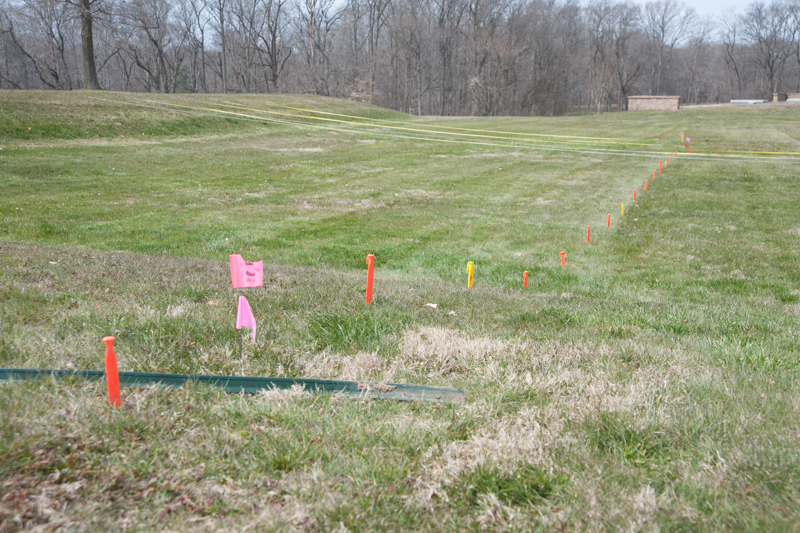
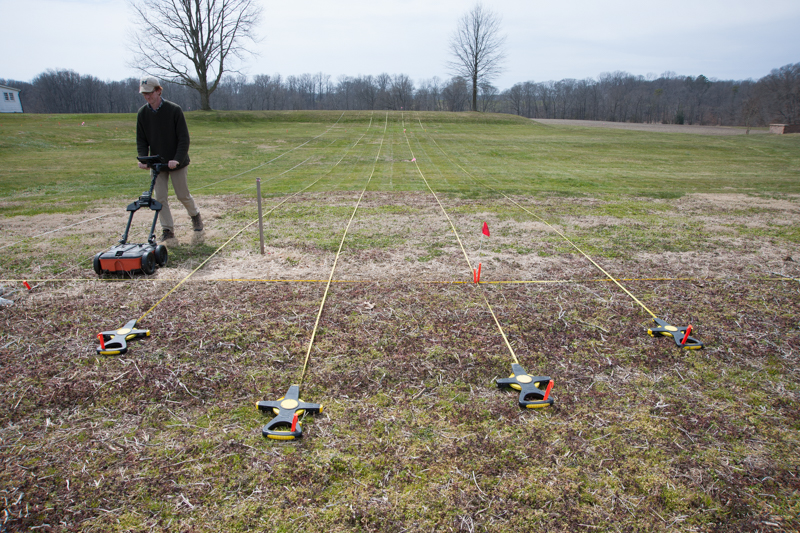
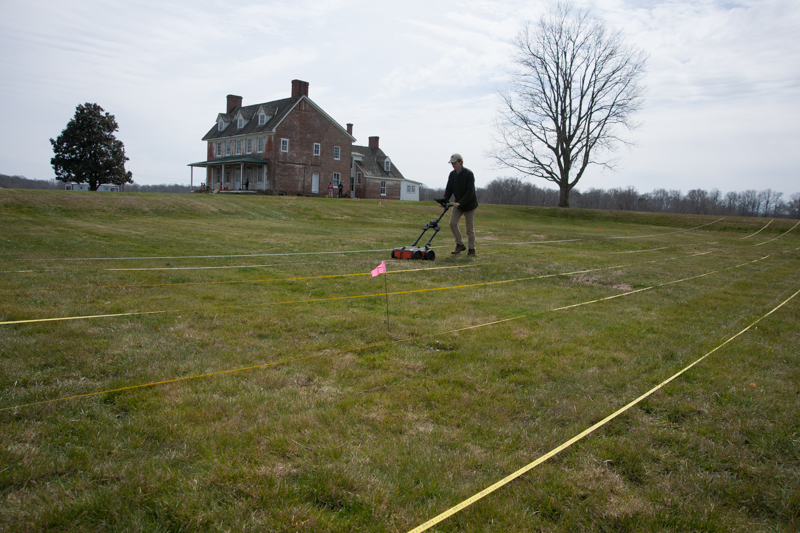
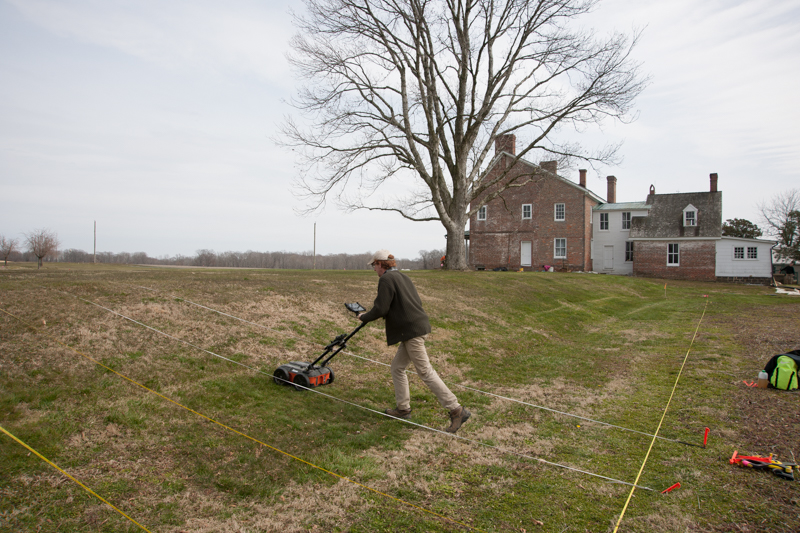
In the photos above you can see the grid on which Dr. Horsley is mapping the terraces, patterns, flower beds, pits, roads and known surveyed points.
Dr. Horsley has more than 15 years of experience working on important research projects in Europe, Asia and North and South America. We look forward to receiving his map. It will help the archaeologists decide where to excavate next. It will also help the landscape architect design the gardens.
Hidden foundations, windows and doors keep being uncovered
During March of 2018, the archaeologists of Applied Archaeology and History Associates and the carpenters of Lynbrook of Annapolis continued to uncover the hidden layers of the house. They found a buried foundation, an enshrouded window, a few (also enshrouded) door openings, and notable wall treatments. You can see them in the photos below. Each photo is accompanied by a brief description, which you will see as soon as you hover over the image.
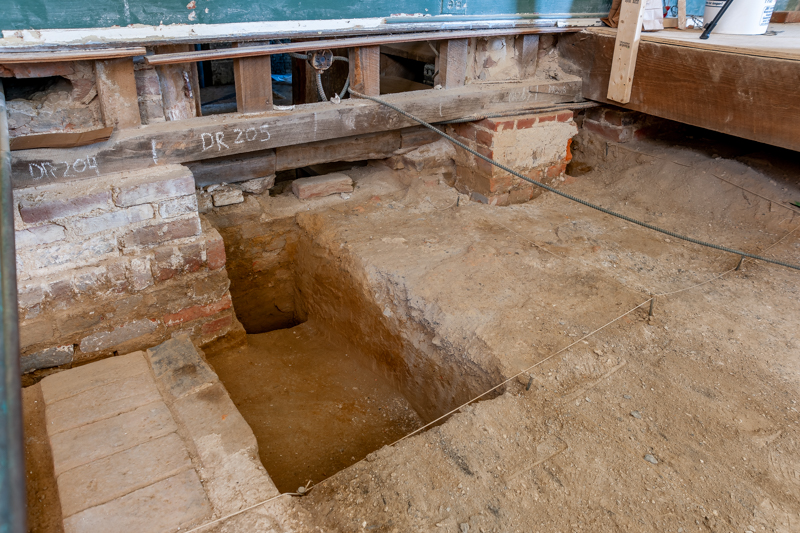
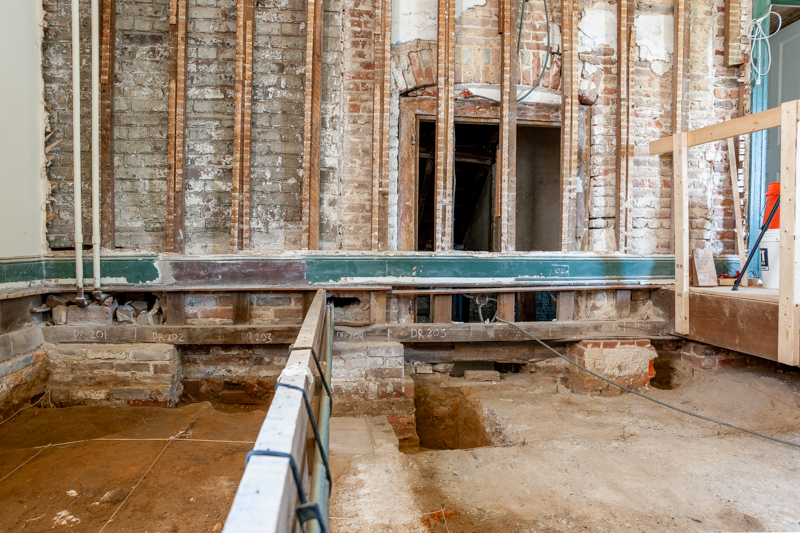
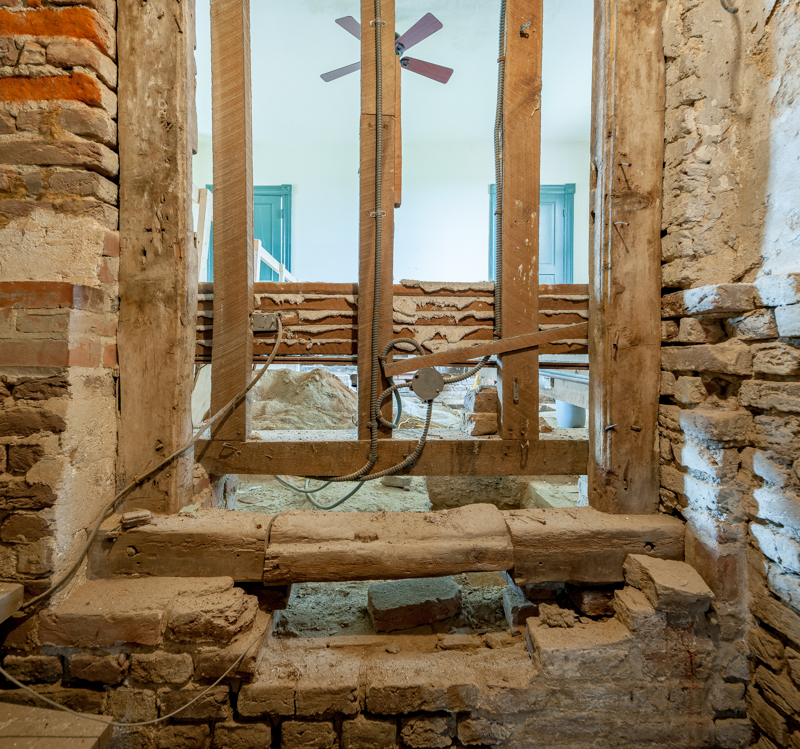
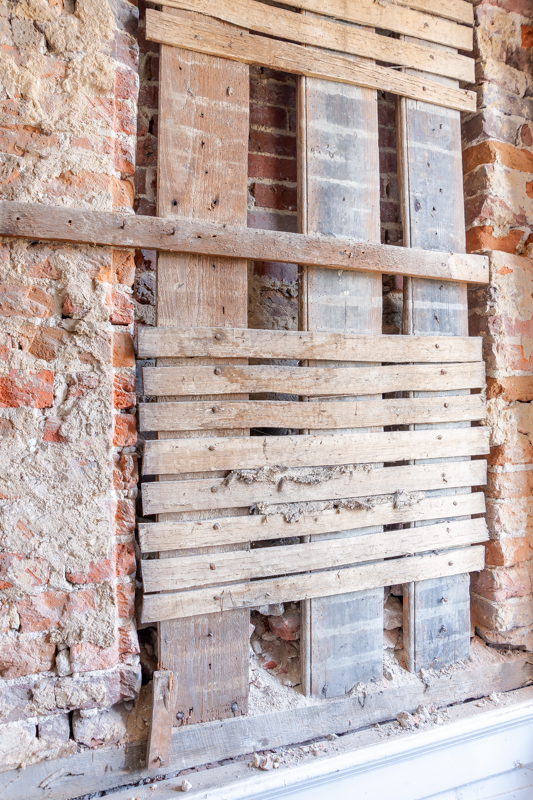
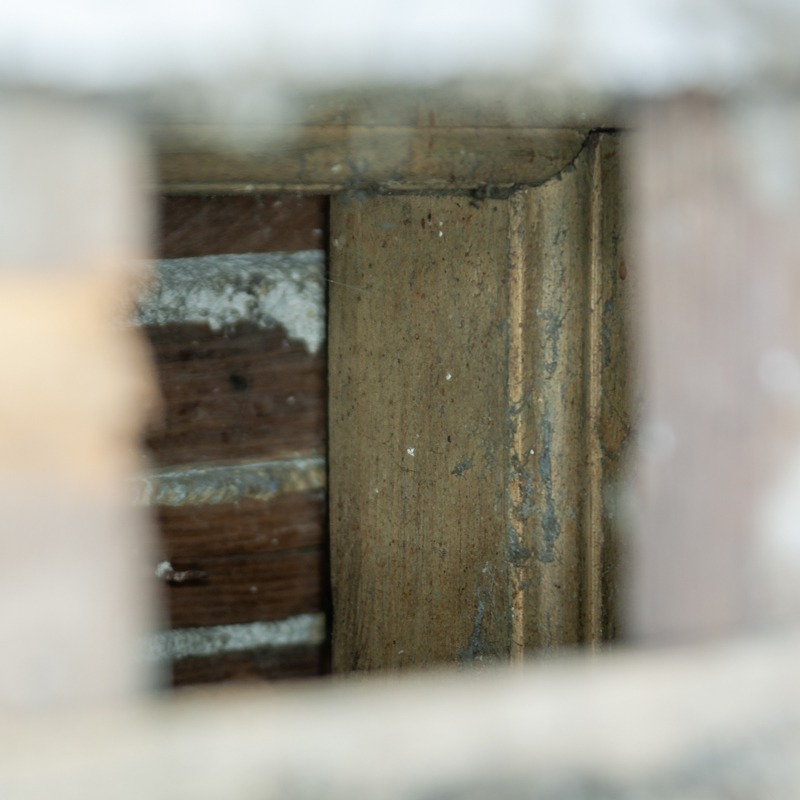
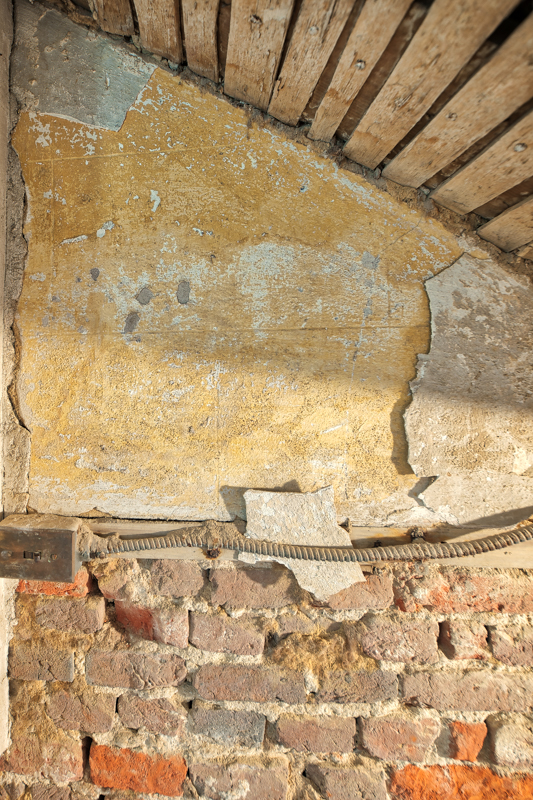

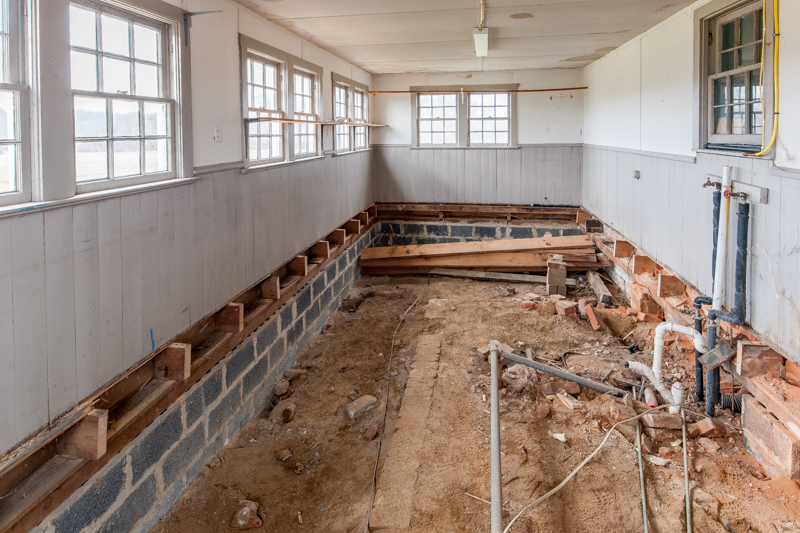
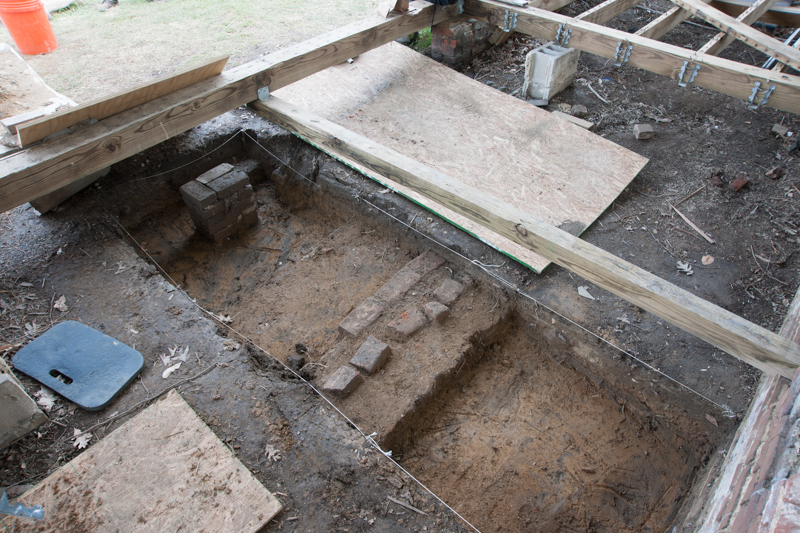
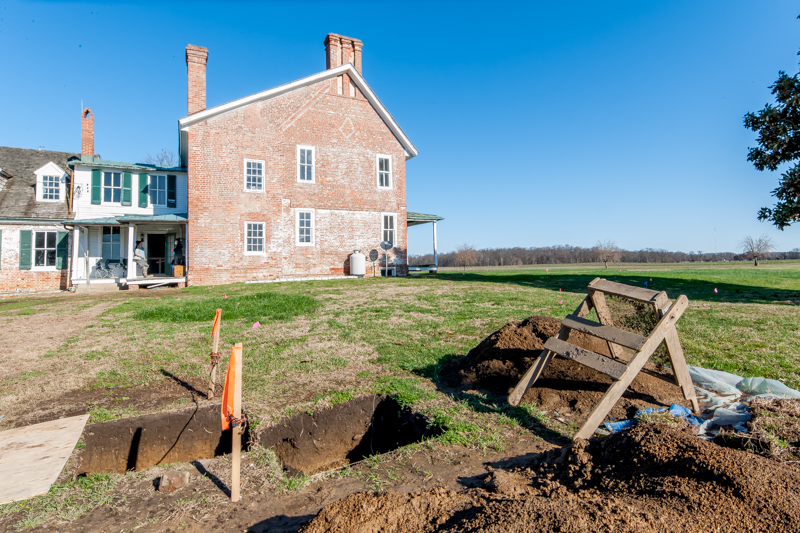
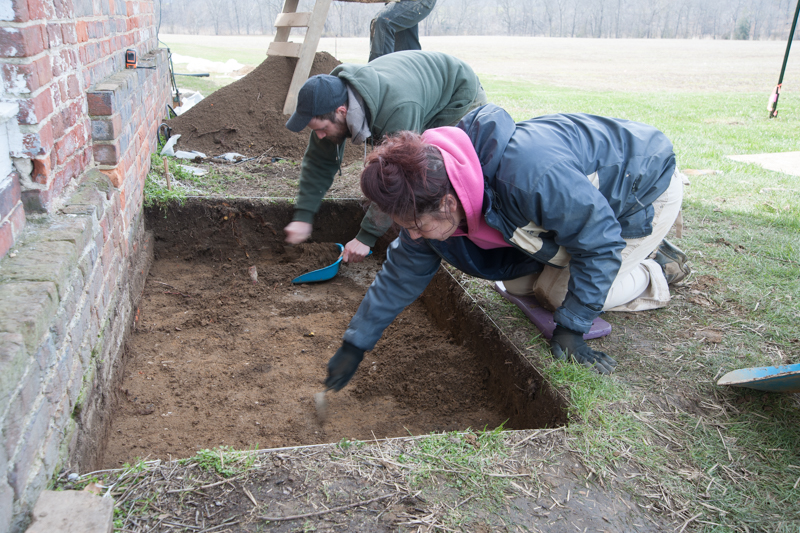
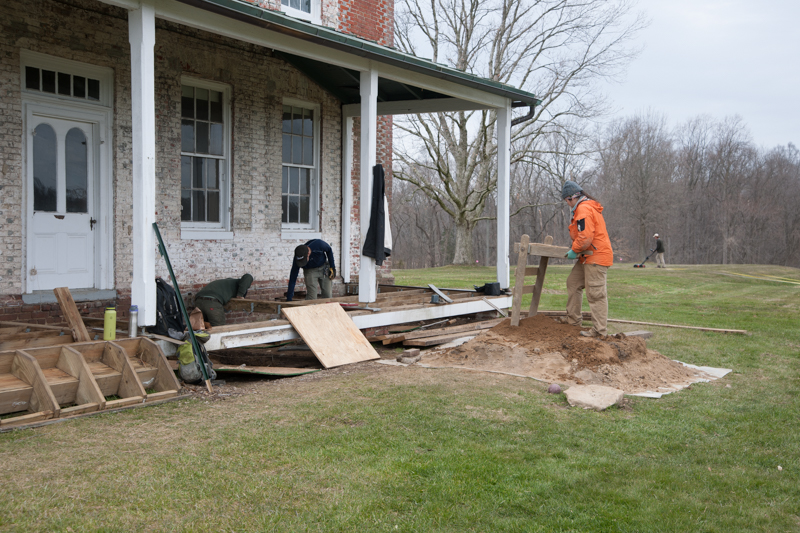

You can see the archaeological team hard at work in the above photos. They continue to make discoveries in and around the house.
You can now explore the house without even going there
One of the principles that guides the Cloverfields Preservation Foundation is transparency. Transparency is what motivates us to issue this newsletter, and it is also behind our decision to create and publish an exceptional visualizing aid: 3D tours.
You can view the full interior 3D tour here, and the full exterior 3D tour here. The 3D tours allow you to "walk through" and explore the house from the comfort of your computer screen. Each circle on the floor is a clickable point where you can move and see 360 degrees around you. For the most immersive experience, we recommend a full screen view. The tours are also accessible through the website of the Cloverfields Preservation Foundation (see the "Research" tab).
The 3D mapping of the interior was done by a company called Next Step 3D Tours. They utilized a mounted camera that has several lenses and then organized the recorded material into an interactive doll house model.
The 3D mapping of the exterior was done by another company, called Elevated Element. They used a drone with a mounted camera to capture every detail of the exterior of the Cloverfields house and adjacent landscape. Photos of the process can be seen below.




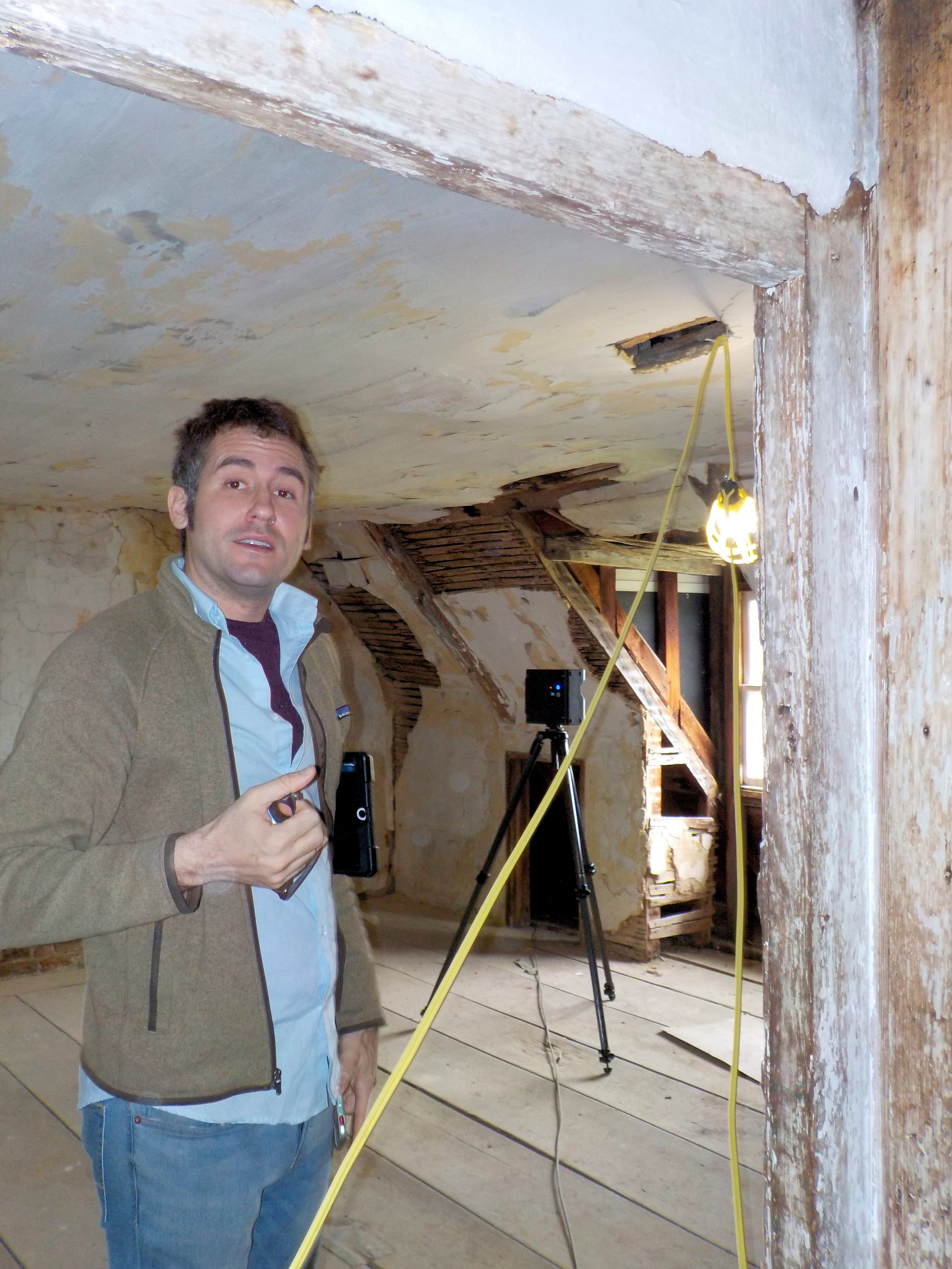
Specialized software was used to stitch together the recorded material. The experts of Elevated Element were then able to create the exterior 3D tour. Elevated Element also provided us with the following 3D animation.
3D is a particularly useful investigative tool. Not only does it record the house at one point in time, but it also provides us with an illustrative reference point for when we are not on site.
***
During March of 2018, hidden roads, terraces, gardens, foundations, windows and doors were exposed. The next few months should be quite telling, as the team works together to date them and tell the story of the house.
By: Devin Kimmel, AIA, ASLA, for the Cloverfields Preservation Foundation
Photography by Pete Albert
Video by StratDV Video Production
